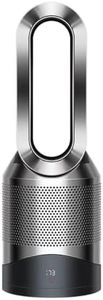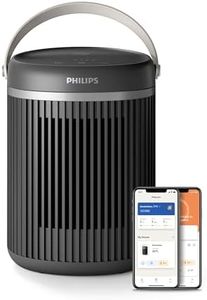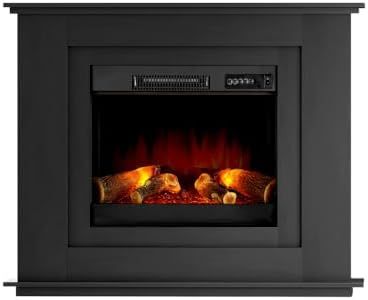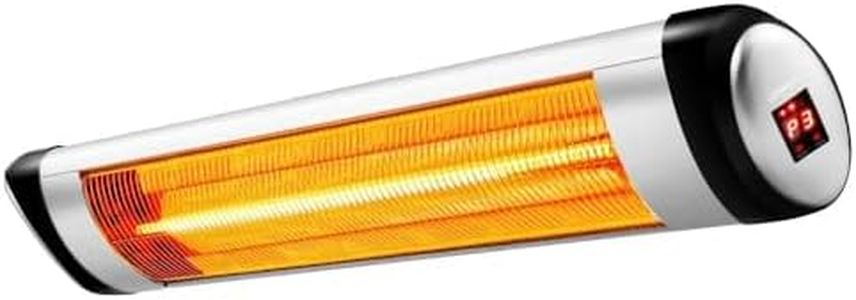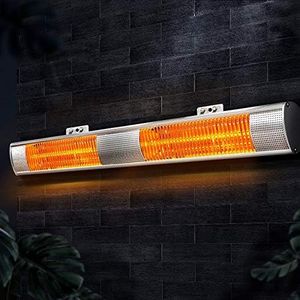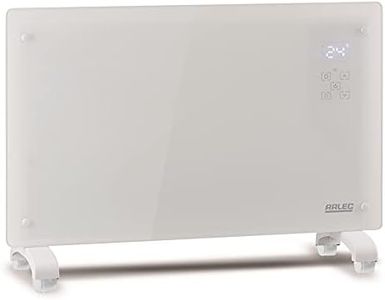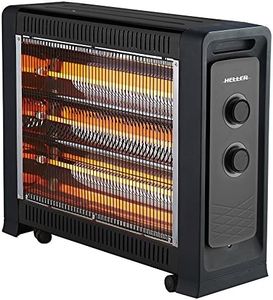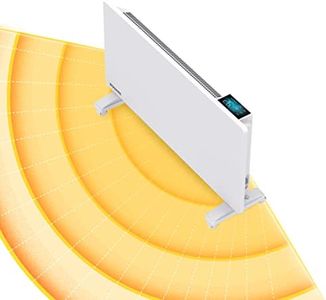We Use CookiesWe use cookies to enhance the security, performance,
functionality and for analytical and promotional activities. By continuing to browse this site you
are agreeing to our privacy policy
10 Best Space Heaters
From leading brands and best sellers available on the web.Buying Guide for the Best Space Heaters
When choosing a space heater, it's essential to consider how and where you'll use it. Space heaters come in a variety of types and sizes, and selecting the right one ensures comfort, safety, and energy efficiency. Start by thinking about the size of the room you want to heat, your need for portability, how quickly you want the room to warm up, and any safety concerns (like kids or pets). By understanding key features and specifications, you can find a heater that's both effective and well-suited to your needs.Heater TypeThe type of space heater—such as convection, radiant, or fan-forced—determines how it delivers heat. Convection heaters warm up the air in a room gradually, making them good for sustained warmth in closed spaces. Radiant heaters provide quick, direct warmth to objects and people in front of them, which works well for personal heating. Fan-forced heaters use a fan to blow air over a heated element, warming rooms quickly but sometimes less evenly. Your best choice depends on whether you want to heat the whole room slowly and uniformly, or quickly warm up a personal space.
Wattage/Heat OutputWattage (watts) is a measure of how much heat the heater can produce. Higher wattage means the heater can warm larger spaces or provide heat faster. Space heaters commonly range from 500W to 1,500W. For small rooms or personal heating, lower wattage is usually sufficient. For larger rooms, higher wattage may be necessary, but consider the power limits of your outlets and safety. Think about your room size and how intense you want the heat to be—a smaller bedroom needs less wattage than a large living room.
Thermostat ControlA thermostat allows the heater to maintain a set temperature automatically, turning on or off to prevent overheating or wasted energy. Some heaters have simple dial controls, while others offer digital settings for more precision. A basic control is usually fine if you just want general warmth, but for energy savings or specific comfort levels, look for more advanced thermostats. Consider if you want to just 'set it and forget it,' or if precise temperature is important for your comfort.
Safety FeaturesKey safety features include tip-over protection (shuts the heater off if knocked over), overheat protection (turns it off if it gets too hot), and cool-touch exteriors. Tip-over and overheat protections are especially important if you have children, pets, or plan to use the heater unattended. Cool-touch casings are a good idea for homes where there’s a risk of brushes or accidental contact. Think about who will be around your heater and whether it will be operating while you're not right there.
Size and PortabilitySpace heaters come in a range of sizes and weights. Compact, lightweight units are easy to move between rooms and good for personal or small room use. Larger units can heat bigger spaces but may be heavy or bulky. If you want to use your heater in several locations or store it away easily, portability is a big plus—look for handles or wheels. For stationary, long-term heating of one space, size may matter less.
Noise LevelHeaters with a fan tend to be noisier, while oil-filled and radiant heaters operate almost silently. If you plan to use your heater in a bedroom, study, or quiet area, noise may be an important factor. Evaluate whether the sound of a fan would bother you, or if silence is required for your environment. Consider your sensitivity to noise and what activities will be going on in the room where you’ll use the heater.
Timer and Remote ControlA timer lets you set the heater to run for a set period before shutting off, which can increase convenience and safety. Remote controls allow for adjusting settings without leaving your seat. Timers are helpful if you like to fall asleep with the heater running, while remotes are great for easy, on-the-fly adjustments. Choose these features based on your lifestyle and how much control or convenience you want in your daily use.
